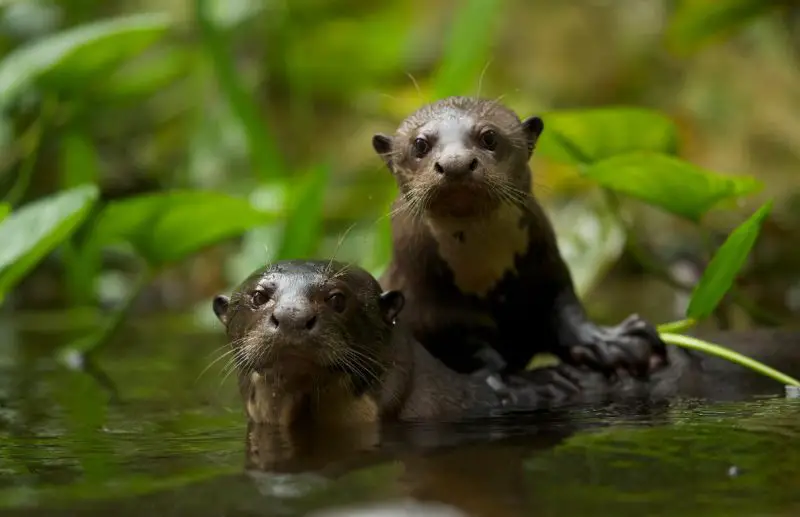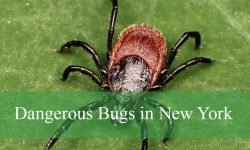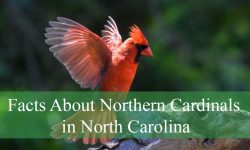River otters move through Louisiana’s waterways with a quiet elegance that often escapes notice. They slip beneath dark bayou surfaces, vanish under cypress roots, and reappear with a flash of their smooth bodies, leaving only a ripple behind. While they are among the most charismatic mammals in the state, much of their daily life remains hidden in marsh shadows, flooded forests, and complex river systems.
Louisiana offers one of the richest wetland environments in North America. From the Atchafalaya Basin to coastal marshes near the Gulf, river otters thrive in an ever-shifting mosaic of freshwater, brackish channels, and interconnected swamps. Their adaptations—physical, behavioral, and ecological—allow them to survive in places where other predators struggle.
Below are 14 secrets, blending behavioral insights, ecological roles, and deep scientific facts that reveal how remarkable Louisiana’s river otters truly are.
1. Louisiana Holds One of the Strongest River Otter Populations in the Southern U.S.

While otters exist throughout much of North America, Louisiana supports one of the most stable and widely distributed populations in the southern United States. The state’s wetland diversity plays a major role in this success. River otters use bayous, marshes, floodplains, oxbow lakes, slow-moving rivers, and even man-made canals as part of their daily routines.
The Atchafalaya Basin, in particular, is a stronghold for the species. Its complex network of swamps and waterways provides year-round prey and abundant shelter, helping otters thrive even when other regions experience population declines. Coastal marshes also support otters, as they can tolerate brackish conditions that many aquatic mammals cannot.
Historically, otter numbers dropped due to trapping and habitat loss, but Louisiana’s wetland restoration efforts—combined with reduced pressure from the fur trade—have allowed populations to rebound. Today, they are one of the state’s clearest indicators of healthy aquatic ecosystems.
2. River Otters Have an Extraordinary Diet That Reflects Louisiana’s Aquatic Richness
River otters are opportunistic carnivores, and their diet changes dramatically depending on where they live. Louisiana’s rich aquatic environments give otters access to an incredible range of prey that many other predators cannot consistently exploit.
Their diet typically includes:
-
Fish, crayfish, amphibians, crabs, insects, and small aquatic invertebrates
-
Occasional birds, eggs, small mammals, and carrion
Fish are often the main food source, but otters prefer slow, easily caught fish rather than fast predators. Crayfish, abundant in many Louisiana freshwater systems, form a major part of the diet in summer and early fall. In marshes near the Gulf, otters may feed on blue crabs, shrimp, or even small flounder when tides push marine species inland.
Their flexible diet is one reason otters thrive in both pristine and moderately disturbed waterways. They simply switch prey depending on what is available. This adaptability helps otters survive seasonal changes, shifts in water levels, and fluctuations in fish populations.
3. Otters Use Complex Underwater Skills to Hunt Efficiently in Murky Louisiana Waters
Hunting in Louisiana’s dark, sediment-rich waters requires more than speed—it requires the ability to detect prey through sound, movement, and subtle water vibrations. River otters are equipped with several adaptations that allow them to excel in these murky environments.
Their whiskers, or vibrissae, are highly sensitive, detecting minute water movements from fish or crustaceans hiding beneath debris. Otters rely on these whiskers as much as their eyes, especially in shaded bayous or cloudy marsh channels where visibility drops dramatically.
They can close their nostrils and ears while diving, and their streamlined bodies allow for quick bursts of acceleration. Otters often swim in short loops, flipping underwater and changing direction rapidly to disorient fish. When hunting crayfish, they use their forepaws to probe muddy bottoms or flip logs and vegetation.
These refined behaviors help otters locate food that other predators cannot exploit, giving them an advantage in complex aquatic ecosystems such as the swamp forests of southern Louisiana.
4. River Otters Build Hidden Dens in Places Most People Never Notice
Otters spend only part of their time in water; they also rely on hidden dens located strategically along banks, levees, and forested marsh edges. These dens often go unnoticed because otters typically reuse existing structures rather than digging their own.
Dens may include old beaver lodges, hollow logs, crevices under tree roots, or abandoned muskrat burrows. In coastal zones, otters sometimes occupy elevated mounds or natural ridges where floodwaters cannot reach their young. The dens are usually tucked away in shaded, concealed spots with multiple underwater entrances, allowing otters to enter and exit without exposing themselves to predators.
Inside, the chambers remain dry and insulated—crucial for raising pups during cooler months. Otters frequently maintain multiple dens within their home range, shifting between them depending on water levels, prey availability, and disturbance.
Because these dens blend seamlessly into the landscape, otters can live close to human activity without being noticed, even along bayous bordered by fishing cabins or along canals used for boating.
5. Otters Communicate Through Scent Stations and Social Behaviors That Reveal Hidden Territory Boundaries
Otters appear playful, but they maintain structured territories through a complex communication system. Their most important communication tools are scent stations—small, elevated patches of ground where otters leave scent marks using musk and urine. These stations are usually located on logs, grassy patches, mud banks, or high points along a river corridor.
An otter’s scent conveys information about identity, age, reproductive status, and territory ownership. These scent posts reduce conflict, allowing otters to avoid direct confrontation while still maintaining clear boundaries.
Otters also communicate through:
-
Chirps, whistles, grunts, growls, and contact calls
-
Body movements such as rolling, sliding, or tail gestures
-
Play behavior that reinforces social bonds within family groups
Family groups, usually consisting of a mother and her offspring, travel together for many months. During this period, otters learn hunting techniques, travel routes, den locations, and vocal cues that will guide them throughout adulthood.
This sophisticated communication system is especially useful in the dense, winding waterways of Louisiana, where visual signals are often obstructed by vegetation or water conditions.
6. River Otters Shape Aquatic Ecosystems More Than People Realize
Otters play a significant role in maintaining healthy aquatic ecosystems across Louisiana. Their predation helps regulate fish and crayfish populations, preventing any single species from dominating. By feeding on diseased, slow, or injured prey, otters indirectly support the health of fish communities.
Their movement through waterways also influences nutrient cycling. As otters consume prey in one location and defecate in another, they help distribute nutrients across the landscape—an important process in nutrient-limited swamp systems.
Otters also contribute to habitat modification in subtle ways. Their frequent slides into the water compress vegetation, and their foraging flips logs, disturbs sediment, and creates small openings that different aquatic organisms later use as shelter. These small, repeated disturbances help maintain ecological diversity within waterways.
Because otters are sensitive to pollution, water quality, and habitat fragmentation, their presence alone is a strong indicator of environmental health. Where otters thrive, aquatic ecosystems are generally functioning well.
7. Otter Populations Are Expanding Across Louisiana Thanks to Recovery Efforts and Wetland Resilience
Although river otters once experienced population declines due to trapping and habitat loss, they have made a strong comeback across Louisiana. Their recovery reflects both conservation efforts and the resilience of the state’s wetland systems.
Several factors contribute to this expansion:
-
Wetland restoration and protection
-
Decline of commercial trapping
-
Abundant prey populations
-
Adaptation to both freshwater and brackish environments
-
Connectivity between major river basins
Otters are especially skilled at recolonizing areas where waterways reconnect after periods of drought or disturbance. They move through drainage systems, canals, and coastal marsh corridors, gradually extending their range into regions where they were previously rare.
Juvenile otters often disperse far from their natal home range, especially during late winter and early spring. This movement supports genetic diversity and helps maintain stable populations across wide geographic areas.
Their expansion also highlights the importance of ongoing wetland protection. As Louisiana continues to face coastal erosion and changing hydrology, safeguarding aquatic corridors remains essential for allowing otters—and countless other species—to persist.
8. Their whiskers can detect pressure changes as small as a few microns in water
River otters possess one of the most advanced vibrissae systems among North American mammals. These whiskers are not just for sensing obstacles—they read hydrodynamic trails, which are tiny pressure disturbances created by swimming fish or moving crustaceans.
Even when visibility in Louisiana’s bayous drops to near zero, otters can track prey simply by following the “wake signature” left behind in the water. Research shows they can detect changes equivalent to the movement of a fish tail several body lengths away.
This adaptation explains why otters remain efficient hunters in muddy, tannin-stained rivers where most visual predators struggle.
9. Their lungs and blood chemistry allow repeated deep dives without fatigue
Otters have a diving physiology extremely different from terrestrial mammals. Their lungs store less air relative to their size, but their blood and muscles store far more oxygen, thanks to:
-
unusually high concentrations of myoglobin
-
a large blood volume for body size
-
the ability to shunt blood toward vital organs while diving
They can slow their heart rate to conserve oxygen, sometimes dropping to less than half their resting rate. This dive reflex allows them to remain underwater for 4–8 minutes when needed, far longer than most people realize.
These internal adaptations evolved specifically for life in fast-moving rivers and fluctuating marsh waters.
10. River otters are ecosystem “nutrient movers,” redistributing food webs across habitats
Most predators concentrate energy where they catch prey, but otters frequently consume food far from where they capture it. They often drag fish, crabs, or crayfish onto logs, banks, or elevated dens to feed.
This behavior creates nutrient hotspots—small zones where bones, shells, and scat deposit nitrogen, phosphorus, and calcium into surrounding vegetation.
Studies show that areas near otter feeding sites have significantly richer soil and higher plant diversity. This makes otters silent contributors to marsh productivity, connecting underwater and terrestrial ecosystems in ways people rarely observe.
11. Their scent glands produce one of the most complex chemical signatures among carnivores
Otters possess anal glands that produce a musky secretion known as “spraint.” While many carnivores use scent marking, otter spraint contains a highly complex chemical profile, including:
-
nitrogenous compounds
-
volatile fatty acids
-
sulfur-based molecules
-
individual-specific biomarkers
Each deposit acts as a biological “business card,” encoding identity, sex, reproductive status, territory boundaries, and even recent diet.
For otters living in Louisiana’s tangled waterways—where visibility is low and sound carries unpredictably—chemical communication is a more reliable method than visual signals.
12. Their swimming technique changes depending on water speed and density
Otters don’t use one single swimming style—they actually switch between modes based on water conditions:
-
Punting: pushing off the river bottom with hind paws
-
Porpoising: arcing out of the water to reduce drag at high speeds
-
Subsurface gliding: using their whole body like a flexible fish
-
Tail-propelled bursts: rapid acceleration during hunting
These changes allow otters to conserve energy while maximizing maneuverability. In Louisiana’s swamp ecosystems—where water density changes with temperature, salinity, and sediment load—this versatility is crucial.
13. They maintain a surprisingly large home range due to metabolic demands
River otters appear playful, but their metabolism is intense. Their high-energy lifestyle, constant movement, and carnivorous diet force them to patrol territories far larger than most semi-aquatic mammals of similar size.
A single otter in Louisiana may use:
-
8–15 miles of river corridor
-
multiple secondary channels
-
dozens of small marsh ponds
-
several temporary resting sites and 3–5 dens
These large ranges help them track prey, avoid territorial conflict, and exploit seasonally shifting water levels—especially important in the unpredictable hydrology of coastal Louisiana.
14. Cooperative play is not just “play”—it is cognitive training for adult survival
People often think otters play for fun, but scientific research shows that their social play serves essential adaptive purposes:
-
refining hunting strategies
-
improving reflexes
-
developing underwater agility
-
practicing dominance and submission
-
strengthening familial bonds that improve pup survival
Play often mimics adult behavior—ambushes, escapes, rapid pursuit, and coordinated group movement. Pups that engage more in play tend to become more successful independent hunters, especially in environments with complex prey like crayfish and fish schools.
In Louisiana’s dynamic marsh ecosystems, where prey species behave differently depending on tides and water levels, this behavioral training is directly linked to long-term survival.
Frequently Asked Questions About River Otters in Louisiana
Are river otters common in Louisiana?
Yes. They are widespread across bayous, rivers, marshes, and coastal wetlands.
Do otters live in saltwater?
They prefer freshwater but can tolerate brackish environments in coastal marshes.
What is their main food?
Fish and crayfish, supplemented by crabs, amphibians, and aquatic invertebrates.
How long do otters stay with their mother?
Usually around 8–12 months, depending on food availability.
Are otters aggressive?
They avoid humans and are generally not aggressive unless cornered.
Do otters migrate?
No, but they travel extensively within their home ranges following prey cycles.
Are otters signs of healthy waterways?
Yes. Their presence usually indicates good water quality and stable aquatic ecosystems.
Final Thoughts
River otters embody the wild character of Louisiana’s waterways. Beneath their playful reputation lies a highly specialized predator equipped with advanced sensory systems, efficient hunting strategies, complex communication, and remarkable ecological influence. Their survival depends on the resilience of wetlands, the health of fish populations, and the continuity of aquatic corridors.
As Louisiana continues to face environmental changes—from coastal erosion to altered river flows—otters serve as quiet indicators of ecosystem stability. Understanding their behaviors, physiology, and ecological roles deepens our appreciation of the marshes, rivers, and swamps they inhabit.






